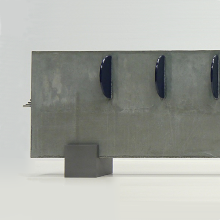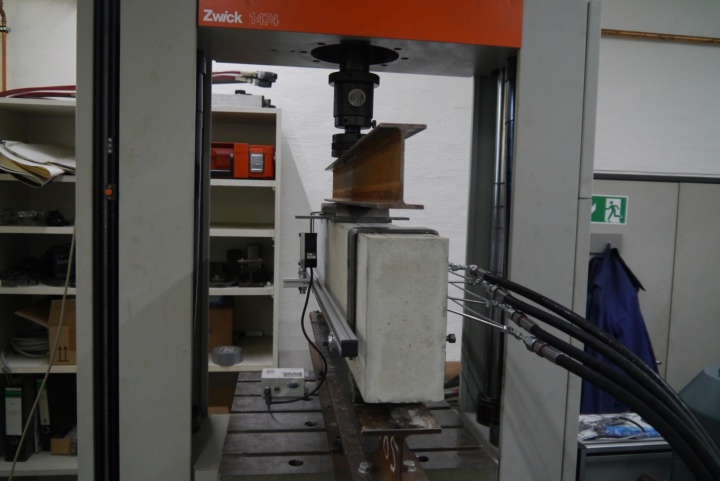Funding Phase II
By integrating fluid actuators into structural elements such as beams or slabs, load transfer can be optimized. This can lead to an increase in load-bearing capacity and consequently a reduction in mass.
Adaptive structures are one way to respond to changing loads. Forces generated by actuators are directed into the structure. This creates stresses and deformations within the component that counteract the stresses and deformations caused by external influences. As a result, the material used can be used more efficiently and the overall deformation of the component can be reduced to a minimum.
In the second funding period, the principles of FP1 are extended to biaxially stressed slab structures. These components account for up to 50% of the structural mass in a skeleton structure, for example, and therefore offer even greater potential for resource savings compared to the concrete beams of the first funding period. The additional spatial dimension also raises new issues. Integrated actuators that meet the specific requirements of multi-axial load transfer do not exist in mechanical engineering or related fields. The central question of the second funding period in subproject C02 is therefore
How must fluidic actuators be designed for integration into a slab structure, how must the integration be implemented, and how can stresses, deformations, and vibrations be reduced with this system?
Initially, new methods based on influence matrices were developed for the development of an actuation concept for biaxially stretched slabs. This was accompanied by a close exchange with the actuator design department to enable technically feasible solutions.

Summed influences on the vertical translational displacements under a biaxial actuation (a) and a uniaxial actuation rotated by 45° (b) and 135° (c). Picture: (c) Markus Nitzlader

Fields of influence of a uniaxial actuation rotated by 45° (a) and 135° (b) in relation to the vertical translational displacements in the center of the field. Picture: (c) Markus Nitzlader
The development of the new adaptive system was carried out using numerical simulation models supported by experimental investigations. The investigations ranged from individual components of the actuators to slab segments with integrated actuators and a 2 x 2 m prototype of an adaptive slab. In the latter, the specially developed multi-axial actuators are directly inserted into the cross section of the slab.

Foam model to illustrate the actuation concept with simplified actuators and without cover layer. A: biaxial actuator. B: uniaxial actuator. Picture: (c) Matthias Bosch

Prototypes of various actuator pressure chambers. A: Welded steel membrane. B: Bolted steel membrane. C: Bolted elastomer membrane. Picture: (c) Matthias Bosch

Actuator integration within the formwork body of the 2 x 2 m prototype of an adaptive slab without top reinforcement layer. Picture: (c) Markus Nitzlader, Matthias Bosch

Test setup of the 2 x 2 m prototype for a full-surface load (left) and an asymmetrical point load (right). Picture: (c) Markus Nitzlader, Matthias Bosch
The experimental results show that the adaptive slab can maintain the deformation level of an identical slab without actuators under single load, even under double load. In a case study of a 10 x 10 m slab, it was shown that a reduction in cross-section of up to 43 % can be achieved, which corresponds to a reduction in global warming potential of 35 % compared to a corresponding passive reinforced concrete slab.
Subproject Leader
- Prof. Dr.-Ing. Hansgeorg Binz, Institute for Engineering Design and Industrial Design
- Prof. Dr.-Ing. M.Arch. Lucio Blandini, Institute for Lightweight Structures and Conceptual Design
- Prof. Dr.-Ing. Matthias Kreimeyer, Institute for Engineering Design and Industrial Design
Funding Phase I
Adaptive structures are one possibility to react to changing loads on structures. Forces generated by actuators are induced directly into the supporting structure. In this way, stresses and deformations are generated inside the component, which counteract the stresses and deformations caused by external influences. This reduces the overall stresses and deformations of the component.
In the actuation concepts investigated so far, the actuator forces are induced into the structural element via surfaces and edges. Thereby, the structural element is manipulated as a whole. By integrating actuators into the structural element it is possible to influence it locally.
The main question of the subproject C02 is:
How can fluidic actuators be integrated into a structure and how can these reduce stresses and deformations?
The aim of the subproject is to develop a linear, bending-stressed structural element with integrated fluid actuators and to demonstrate the manipulation of the structural behaviour experimentally.
The subproject C02 develops new actuation concepts of a primary support structure. In the investigation of possible design principles and in the component integration of the structure integrated fluid actuators, new ground is being broken into science. The development and the integrational aspects are closely linked and cannot be considered separately.
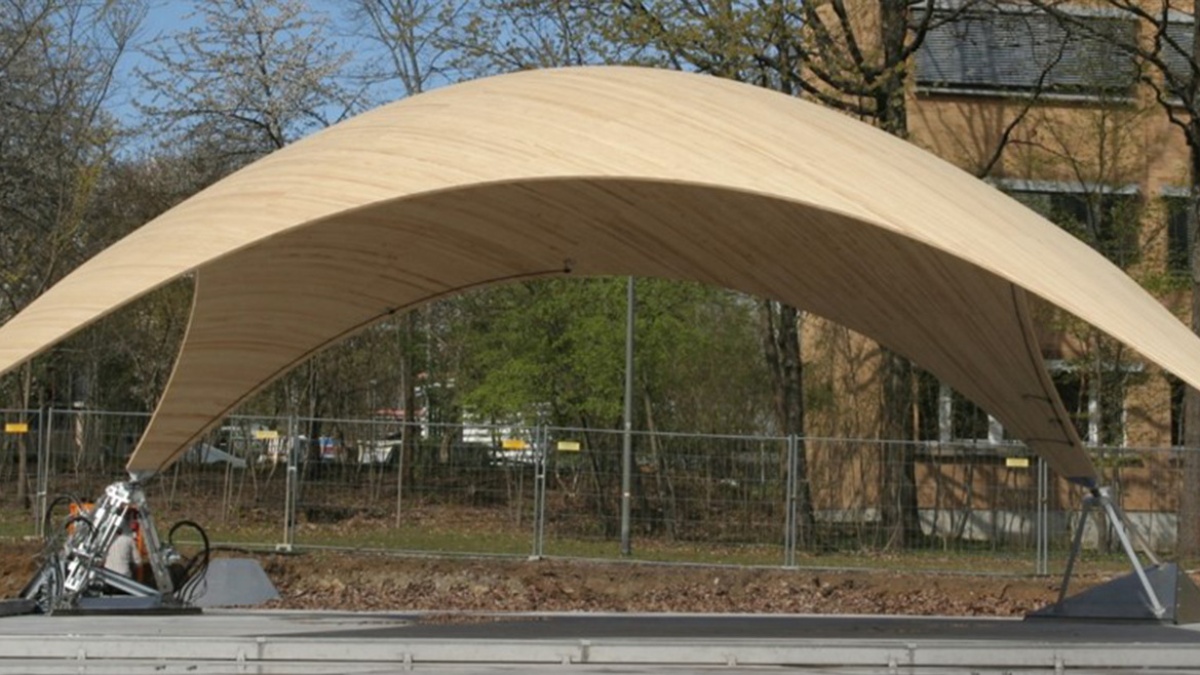
Stuttgarter SmartShell Foto: (c) ILEK
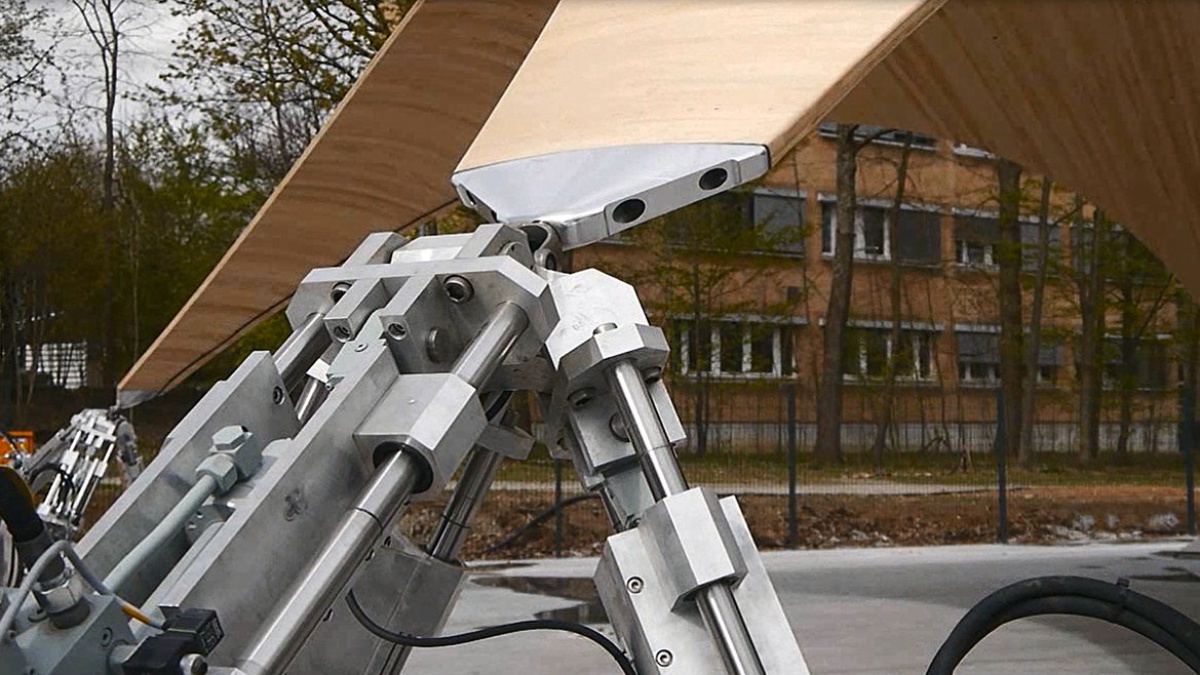
Hydraulisch aktuierbare Auflager der Stuttgarter SmartShell Foto: (c) ILEK
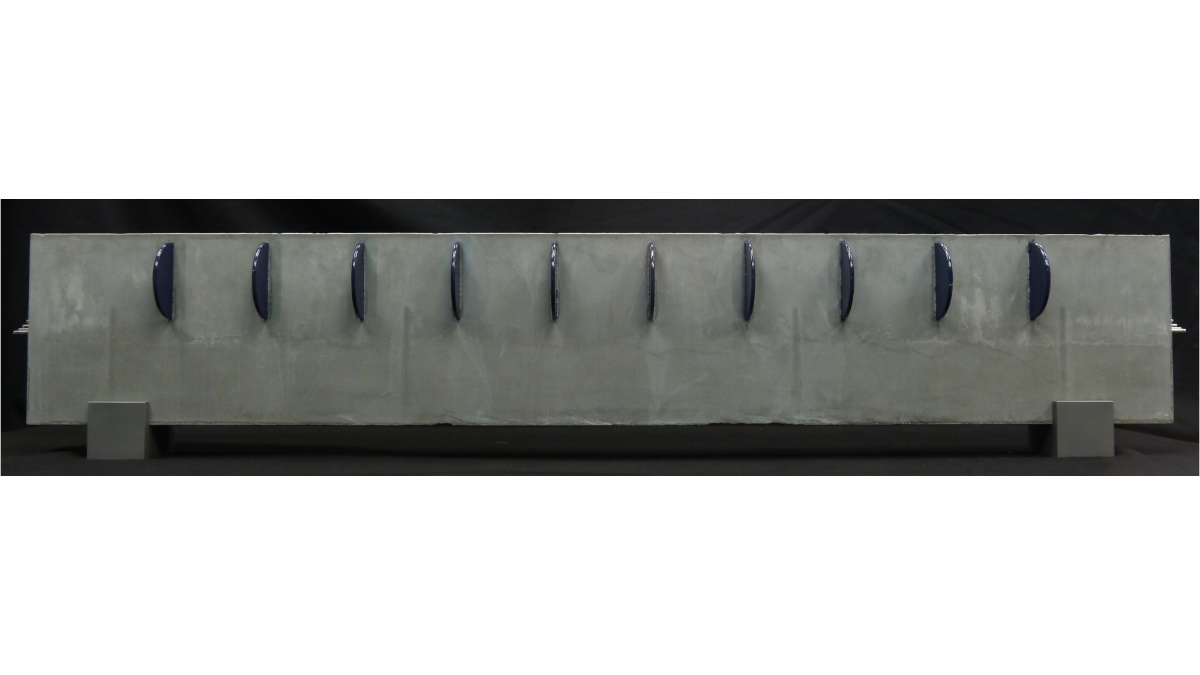
Funktionsmuster eines adaptiven Biegeträgers mit integrierten Fluidaktoren Foto: (c) Christian Kelleter
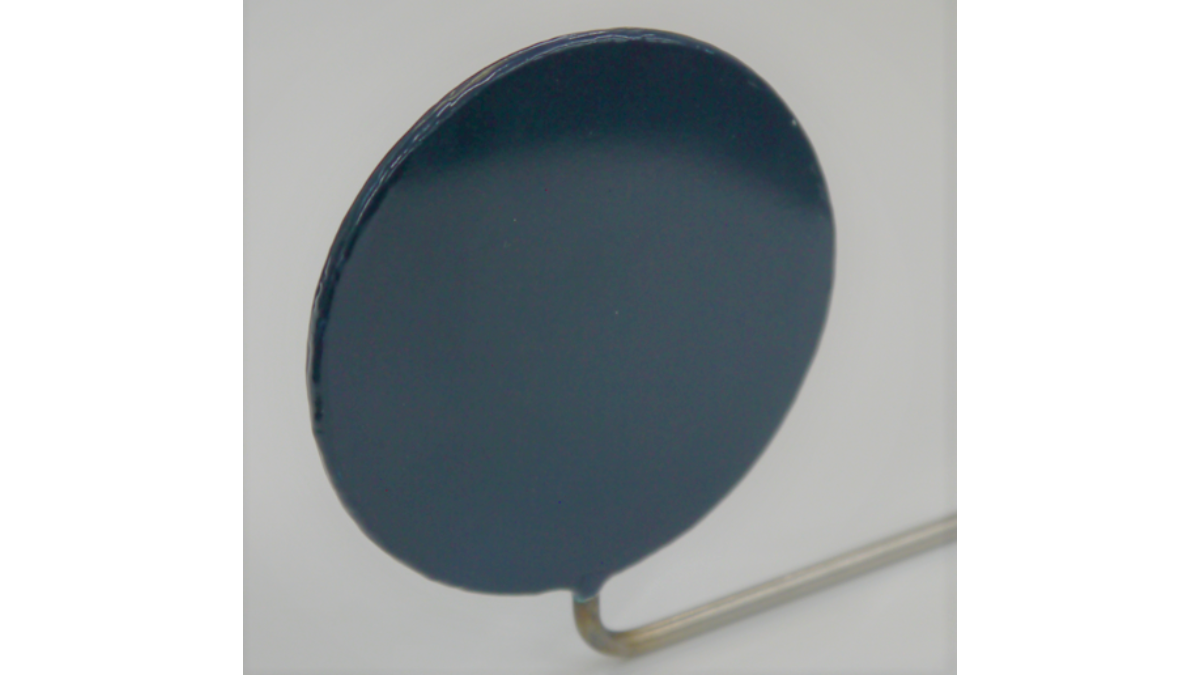
Prototyp eines Fluidaktors Foto: (c) Christian Kelleter
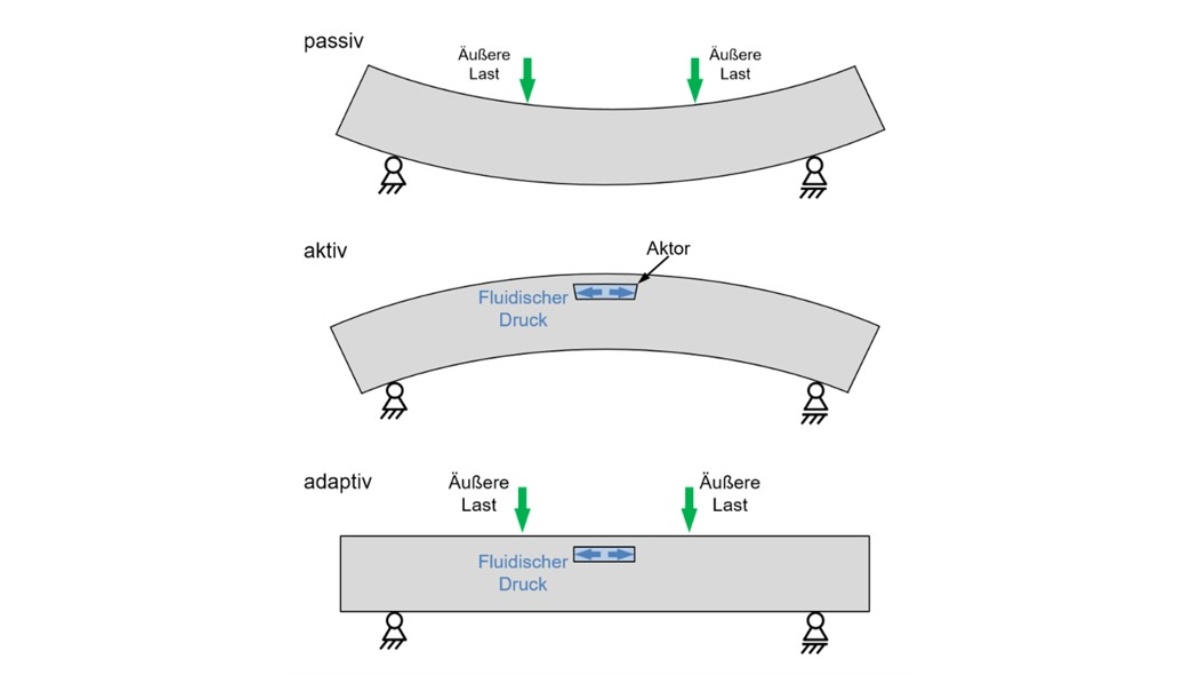
Aktuierungskonzept eines Balkens mit integrierten Aktoren Foto: (c) IKTD/ILEK
The adaptation behavior of a concrete bending beam with integrated actuators was simulated. The simulation results were evaluated experimentally. It was proved that the local actuation of a concrete beam with integrated fluid actuators is possible. Furthermore the deflection of the loaded concrete beam could be completely compensated.
Subproject Leader
- Prof. Dr.-Ing. Hansgeorg Binz, Institute for Engineering Design and Industrial Design
- Prof. Dr.-Ing. Dr.-Ing. E. h. Dr. h.c. Werner Sobek, Institute for Lightweight Structures and Conceptual Design
Contact

Matthias Bosch
M.Sc.Doctoral Researcher
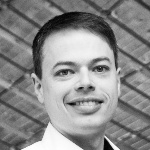
Markus Nitzlader
M. Eng.Doctoral Researcher


